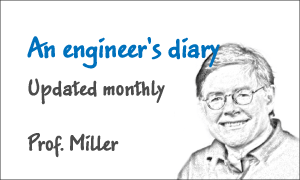Germany
(CEST) |
Japan
(JST) |
内容 |
| 8:00 AM |
3:00 PM |
Welcome breakfast & Check-in |
| 8:45 AM |
3:45 PM |
Introduction
|
| 9:00 AM |
4:00 PM |
Keynote- Electrical Machines in Aeronautics: Stakes for the decarbonation and challenges for the design | Christophe Viguier, SAFRAN
Aerospace industry, as other, is facing new challenges regarding the overall efforts in the decarbonation and CO2 reduction.
A new era is coming with the investigation of new aircraft concepts and new use cases for electrical systems.
We speak about More Electrical Aircraft (MEA), More Electric Propulsion (MEP) and Hybridization.
In such applications, the e-powertrains, composed at least by a power electronics and an electrical machines, are subject to new requirements beyond the legacy aircraft with mainly an increase in power demand and voltage, while keeping the aeronautics constraints.
In order to propose relevant and competitive products, electrical machine have to reach performances beyond the state of the art and so development in new technologies is therefore crucial.
In such new developments, the role of the modelling and the simulation is increasingly important to ensure, among other aspects, the accuracy of the design and the performances and reduce the cost in some V&V phases.
The presentation will bring some insight on this relation for electrical machines involved in new aeronautics applications. |
| 9:45 AM |
4:45 PM |
Development of a MW-class superconducting & cryogenic powertrain demonstrator for electric aircraft | Mohamed Essam Ahmed, Airbus Upnext
In the push for air travel decarbonization, Airbus is advancing liquid hydrogen aircraft technologies, specifically those powered by fuel cell systems. The unique combination of a cryogenic source and the requirement for electric propulsion makes superconducting technologies exceptionally well-suited for these aircraft. Thus, Airbus is developing a 1 MW demonstrator for a cryogenic and superconducting propulsion system, encompassing superconducting cables, cryogenic power electronics, and a superconducting motor within the frame of project CRYOPROP. This motor features a partially superconducting design, utilizing a conventional permanent magnet rotor to bypass the complexities of rotary cryogenics, and a superconducting stator winding to achieve ultra-high electric motor efficiency (>99.5%) and substantial improvements in torque-to-weight ratio. Critical design considerations for this electric motor include the available cryogenic cooling power from hydrogen and the strict size limitations imposed by aircraft integration. This presentation will outline the design of the electric motor, with manufacturing planned for 2025 and a test campaign set for 2026. |
| 10:15 AM |
5:15 PM |
Holistic and Fast Optimization of E-Machines Considering the Powertrain of Electric Vehicles | Maximilian Clauer, Porsche
The requirements for an electric vehicle and its powertrain fundamentally represent a multi-criteria conflict of objectives, such as maximum vehicle acceleration, maximum top speed, maximum range, and minimum mass. Therefore, a novel methodology for the analysis and optimization of electric machines considering the entire powertrain is presented. The powertrain is considered holistically, including mechanical, electromagnetic, and thermal interactions. By utilizing analytical, numerical, and AI-based methods, the approach enables fast calculation and optimization of electric machines with the corresponding powertrain components such as gearboxes, inverters, and batteries. |
| 10:45 AM |
5:45 PM |
Coffee break |
| 11:15 AM |
6:15 PM |
Towards Virtual Prototyping: Large-Scale 3D Multiphysics Simulation of E-Machines | Ciro Alosa, Traton
The automotive and commercial vehicle industries are undergoing a major electrification revolution that is meant to change the shape of transportation in the next years. In fact, new regulations to limit the carbon dioxide emissions and growing market challenges are pushing OEMs to innovate as never before.
In this scenario, electrical machines represent a strategic component where balancing performance, reliability and cost is crucial. To meet these demands, innovative methods to speed-up both the design and the testing phase are required so that the time to market could be reduced.
Thanks to the rising computing capabilities, virtual prototyping represents a fundamental step in this direction. By significantly reduce physical testing with the usage of high-fidelity 3D simulation models, development cycles can be shortened without compromising the accuracy and the design confidence.
This presentation offers a look at Traton’s first steps toward virtual prototyping. A detailed 3D simulation model of an electric machine was developed in JMAG, in collaboration with Powersys, to evaluate the potential benefits and practical challenges of this approach. |
| 11:45 AM |
6:45 PM |
Multiphysics design optimization of an externally excited axial flux machine | Lukas Kirzinger, Schaeffler
Currently, there are two trends in machine development for electric vehicles. The first is to target high power densities using axial flux machines (AFM), which have become increasingly popular in traction drive systems, especially in the yokeless permanent magnet version (PM-AFM). The second is the reduction of rare earth materials due to supply chain risks and environmental concerns. With upcoming sustainability requirements, external excitation with a wound rotor (EE-RFM) is increasingly used in drivetrain applications. This offers the advantage of rotor speed independent excitation, making it ideal for variable speed drives, as in electric vehicle drivetrains. As a combination, the externally excited axial flux machine (EE-AFM) is introduced in this study. However, due to added masses mainly from the rotor windings, the rotor stresses and the displacement are a major issue for EE-RFMs and require special attention while designing the machine. For an EE-AFM, the rotating masses do not interact identically, as the centrifugal forces result in additional bending of the carrier while causing stresses that affect both the electromagnetic performance and the structural integrity of the machine.
From electromagnetic perspective, optimizing an EE-AFM is challenging due to the interdependence of numerous parameters. Performance targets such as torque and efficiency are directly influenced by the design of the magnetic circuit and windings. In an EESM, joule losses in the windings of stator and rotor (including ohmic and frequency-dependent effects) and mechanical behavior have the highest impact on duty cycle losses and ultimately driving range of an electric vehicle.
Connecting these domains and demands is mandatory in the Multiphysics design optimization of EEAFMs. For time-efficient calculations leading to extensive parameter studies, typical 3D simulations of the electromagnetic, mechanical and aerodynamic domains must be avoided as much as possible. In this work, several valid simplifications and model reductions have led to a significant reduction in simulation time while maintaining precise results.
Electromagnetically, the 2D circumferential sliced models are already known and well researched. The advantage of this method is the fast calculation and simultaneous representation of physical results such as nonlinear saturation behavior from the magnetic characteristics of the silicon steel laminations. The simulated torque and losses of the electric machine are assessed and verified for their prediction accuracy. Another 2D simplified model, perpendicular to the electromagnetic one is used to analyze the displacement and stress within the rotating system and is validated with detailed 3D models. Finally, 3D CFD simulations provide insights into airflow patterns and especially drag losses, relevant for the loss calculations.
The proposed holistic design workflow can be used to find the optima for a given requirement on the component level. By extending the degree of freedom with variable gearbox ratios, the most suitable powertrain setup and architecture can be determined. This study highlights the importance of Multiphysics design optimization to maximize the performance and reliability (-60% of displacement possible) of EE-AFMs as demonstrated in the graphs below. Incorporating aerodynamic drag analysis alongside electromagnetic and mechanical considerations offers improved efficiency and extended lifetime for electric mobility applications. |
| 12:15 AM |
7:15 PM |
JMAG 24.2 New Feature Introduction | Yves Thiolière, Powersys
JMAG is continuously developed to automate the design process. To this end, Ver.24.2 further enhances its features. In particular, the optimization calculation using surrogate models and the motor temperature evaluation functions have been significantly updated.
JMAG now provides an offline optimization feature. Offline optimization rapidly searches for Pareto optimal solutions by using a pre-generated surrogate model instead of FEA. You can generate the surrogate model from “JMAG-Design Explorer”, a database feature that stores numerous design cases. Additionally, the FEA-based discrete value optimization feature now supports material optimization. For example, this enables you to perform a Pareto optimization for the trade-off between performance and cost.
For motor operating conditions, you can now plot N-T curves and efficiency maps that account for temperature rise during short-time rating condition in addition to continuous rating condition. JMAG has enhanced the thermal circuit feature to perform these evaluations with high precision and to allow you to create models easily. Previously, you had to input the coolant flow rate in the cooling channels as a known value. In V24.2, JMAG introduces “flow analysis”, which allows you to derive the flow rate. This flow rate is referenced by cooling components such as ventilation and cooling Jacket components.
JMAG has enhanced the design features for axial flux motors. You can now register user custom geometries in JMAG-Express. JMAG-Express now supports the double-rotor, single-stator type. Additionally, adding cogging torque, torque ripple, induced voltage, and demagnetization to the magnetic design scenarios enables you to perform detailed designs.
You can now set up and perform calculations for superconductors from the GUI. JMAG also now supports magnetic field-thermal direct coupling. This allows you to solve complex phenomena such as a temperature increase lowering the critical current density, leading to local normal conduction that causes a further temperature increase. |
| 12:45 AM |
7:45 PM |
Lunch |
| 2:15 PM |
9:15 PM |
JMAG Development Update | Takashi Yamada, JSOL Corporation
JMAG is being developed with a focus on data-driven design (DDD).
DDD is only possible with massive, reliable datasets, making the accuracy and speed of simulations more critical than ever before.
It is said that the introduction of machine learning-based surrogate models can significantly enhance the power of DDD. However, these surrogate models require extensive training using simulation results, which makes the speed of generating FEA results increasingly important—even for 2D analyses.
We have been continuously improving JMAG’s performance to meet the growing demands of DDD.
Additionally, the question of how surrogate models should be used in DDD remains an important topic of investigation in our JMAG development efforts.
The latest advancements will be presented in the upcoming presentation. |
| 3:00 PM |
10:00 PM |
Workshop: Multiphysics Evaluation of Efficiency Maps and Continuous Power under Thermal Constraints | Zoltan Nadudvari, Powersys
In the automotive and aerospace industries, engineers must accurately determine the continuous power capability of electrical machines while considering the thermal limitations of permanent magnets and insulation systems.
The JMAG 24.1 release introduces a new capability of an iterative coupled electromagnetic–thermal simulation framework. This feature enables more precise evaluation of thermal behavior under load conditions, supporting engineers in machine sizing and continuous performance assessment.
This workshop will provide a technical introduction to this functionality, highlighting its application in designing reliable, high-performance electrical machines. |
| 3:30 PM |
10:30 PM |
Challenges and Trends in Design and Optimization of Micro Motors | Shafigh Nategh, Huawei
In this presentation, first challenges in design, optimization and production of Micro Motors are reviewed and then different motor topologies used in this application are discussed. Furthermore, application of JMAG in addressing the design challenges of Micro Motors is elaborated where specific case studies in both 2D and 3D modeling are presented and discussed. In the 2D modeling part, focus is placed on the design optimization, however, the 3D modeling part concentrates on application of virtual prototyping where detailed simulation replaces the need for costly building of hardware proof of concept. |
| 4:00 PM |
11:00 PM |
Coffee break |
| 4:15 PM |
11:15 PM |
Panel Discussion – Simulation Data-Driven Design: Turning Virtual Prototypes into Product Intelligence |
| 5:15 AM |
12:15 AM |
Closure |
| 5:30 AM |
12:30 PM |
Networking event |


